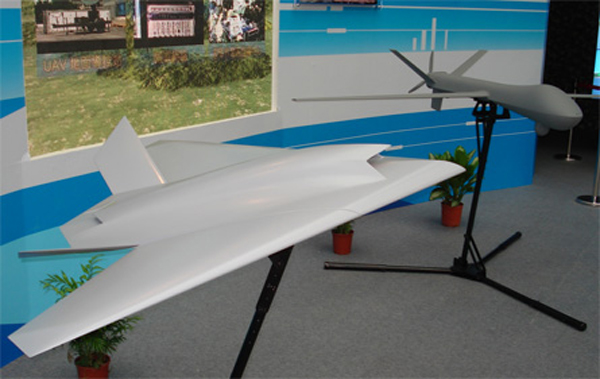Unmanned aircraft systems were a major element of this year’s Taipei Aerospace & Defense Technology Exhibition.
Taiwan’s Ministry of National Defence, which occupied roughly one third of the available show space, displayed several unmanned systems.
One of the more innovative designs featured a swept wing in the centre of the fuselage and a thicker, forward-swept wing from the end of the fuselage, with both wings joined at the tips. The system has been in development since last year, and will have its first flight in November. The as-yet-unnamed aircraft will be able to operate autonomously and have a 4 hour endurance. Its primary role will be the monitoring of air quality, but it will also be capable of carrying a ground surveillance payload.
Elsewhere in the ministry’s pavilion, the Chun-Shan Institute of Science and Technology showed a model of an unmanned combat air vehicle (UCAV) that closely resembled developmental types such as the Boeing X-45 and Northrop Grumman X-47B. The institute said the delta-winged design could be ready within 10 years.
In an animated video at the show, an air vehicle resembling the General Atomics Aeronautical Systems MQ-9 Predator provided guidance for a delta-winged UCAV to destroy a Chinese Sukhoi Su-27 fighter with a missile. Taiwanese UCAVs also were depicted striking land targets on the Chinese mainland.
In the section of the hall reserved for private firms, local company Carbon Based Technology (CBT) displayed two systems under its Uaver brand. Intended mainly for ground observation tasks, the company’s Avian system can be carried in a large backpack and launched by hand or catapult. Weighing 3.45kg (7.6lb), it is powered by two electrical motors in the wings and has an endurance of 90min. The Avian can be controlled by a single operator using a conventional netbook computer and a ground station.
CBT is also developing a larger UAV, the Accipiter. This has a maximum take-off weight of 20kg and an endurance of 6h. The Accipiter recently completed its first flight, and is targeted at surveillance, fire fighting, rescue services and pollution monitoring missions. Accipiter is operated from a van with two operator stations. At present, one van unit can operate only one air vehicle at a time, although CBT plans to increase this to support the use of up to four simultaneously.
Source: Flight Global

